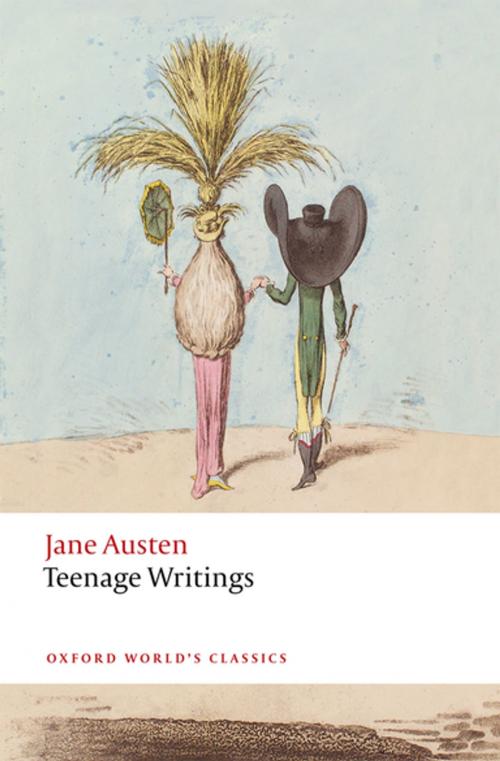| Author: | Jane Austen | ISBN: | 9780191057199 |
| Publisher: | OUP Oxford | Publication: | April 20, 2017 |
| Imprint: | OUP Oxford | Language: | English |
| Author: | Jane Austen |
| ISBN: | 9780191057199 |
| Publisher: | OUP Oxford |
| Publication: | April 20, 2017 |
| Imprint: | OUP Oxford |
| Language: | English |
'Jane Austen practising' Virginia Woolf Three notebooks of Jane Austen's teenage writings survive. The earliest pieces probably date from 1786 or 1787, around the time that Jane, aged 11 or 12, and her older sister and collaborator Cassandra left school. By this point Austen was already an indiscriminate and precocious reader, devouring pulp fiction and classic literature alike; what she read, she soon began to imitate and parody. Unlike many teenage writings then and now, these are not secret or agonized confessions entrusted to a private journal and for the writer's eyes alone. Rather, they are stories to be shared and admired by a named audience of family and friends. Devices and themes which appear subtly in Austen's later fiction run riot openly and exuberantly across the teenage page. Drunkenness, brawling, sexual misdemeanour, theft, and even murder prevail.
'Jane Austen practising' Virginia Woolf Three notebooks of Jane Austen's teenage writings survive. The earliest pieces probably date from 1786 or 1787, around the time that Jane, aged 11 or 12, and her older sister and collaborator Cassandra left school. By this point Austen was already an indiscriminate and precocious reader, devouring pulp fiction and classic literature alike; what she read, she soon began to imitate and parody. Unlike many teenage writings then and now, these are not secret or agonized confessions entrusted to a private journal and for the writer's eyes alone. Rather, they are stories to be shared and admired by a named audience of family and friends. Devices and themes which appear subtly in Austen's later fiction run riot openly and exuberantly across the teenage page. Drunkenness, brawling, sexual misdemeanour, theft, and even murder prevail.















